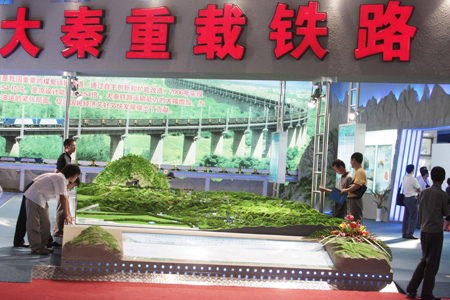Economy
China to spend $1.3t on new rail, road infrastructure
By Kevin Hamlin (China Daily)
Updated: 2011-02-19 11:00
 |
Large Medium Small |
|
 |
|
A booth for Daqin Railway Co at a railway equipment expo in Beijing. Shares of Daqin Railway may rise as the nation's transport infrastructure is upgraded, according to Morgan Stanley. [Photo /?China Daily] |
BEIJING - China plans to spend at least $1.3 trillion over the next five years to ease transport and freight bottlenecks, creating a windfall for companies such as Daqin Railway Co and Anhui Expressway Co.
Rising wages and land costs in the coastal provinces that have underpinned China's industrial development for three decades are forcing manufacturers, including Ford Motor Co, Pfizer Inc and Foxconn Technology Group, to move production inland to cut costs. That's strained China's ability to transport goods within the country, prompting a spending program the size of the Swiss economy during the past two years on roads, railways and airports.
"A huge part of China hasn't been part of the global economy," said Brian Jackson, an emerging-markets strategist at Royal Bank of Canada in Hong Kong. "As that changes, it's going to have a similar effect to what you saw with coastal China joining the world economy."
The development of inland provinces, such as Shanxi and Anhui, is driving an expansion of rail capacity that may help shares of Datong-based Daqin Railway rise 86 percent to 16.03 yuan ($2.4), according to Morgan Stanley. Hefei-based toll road operator Anhui Expressway may rise 44 percent to HK$9 ($1.2) as inland growth is boosted by companies moving from the east coast, says Macquarie Capital Securities.
China has spent $569 billion on fixed-asset investment in railways and roads over the past two years. That may help to more than double the country's share of world exports to 23 percent in the next decade, according to China International Capital Corp economist Zhang Zhiwei.
The nation's 2 trillion yuan in spending on a high-speed rail network will give it almost as much track by next year as the entire rest of the world, even before the 16,000-kilometer network is completed in 2020. More than 7,000 kilometers of track have already been laid and another 6,000 kilometers are scheduled to open by 2012.
Bloomberg News
| 分享按鈕 |



